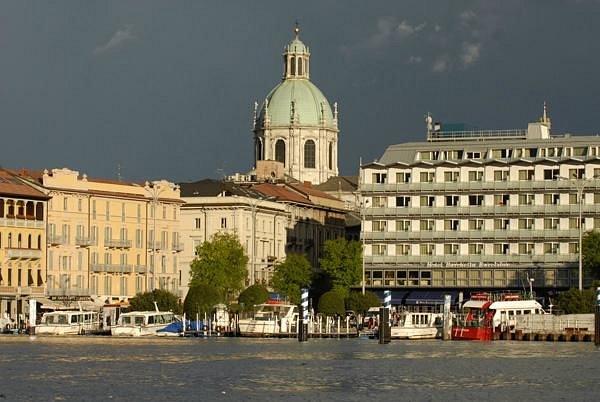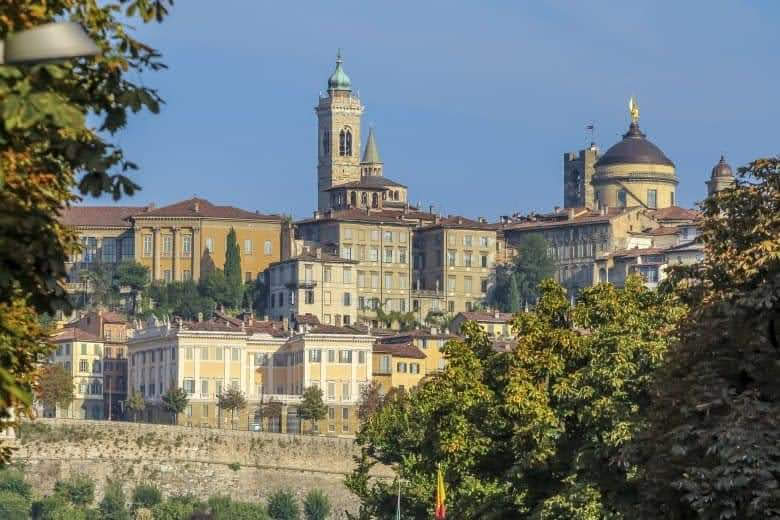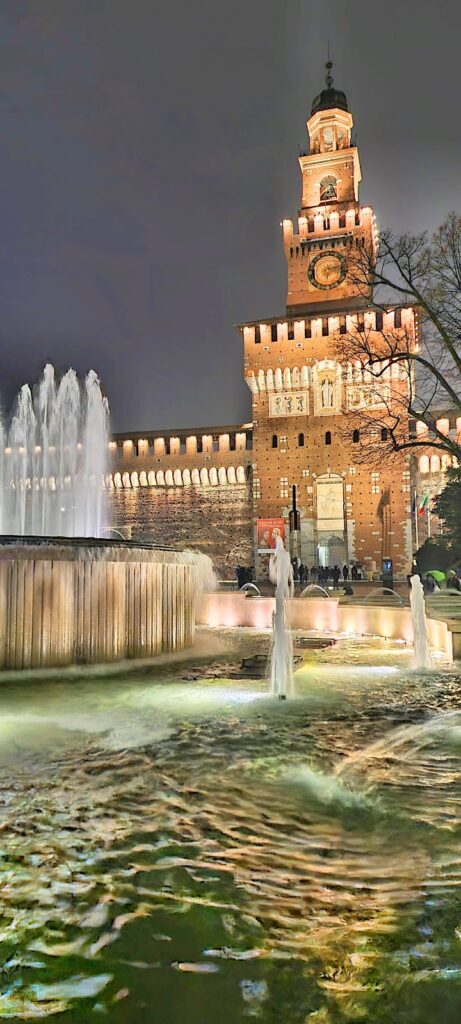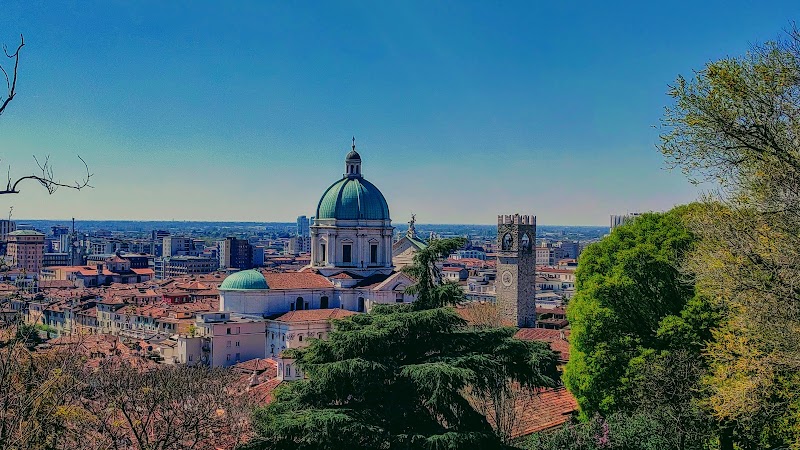Welcome to Lombardy: Italy's Charm in One Region
Have you ever wondered why Lombardy, often referred to as "the engine of Italy", is responsible for approximately 22% of the entire GDP of Italy? It's due to the region's unique blend of enchanting landscapes, rich history, and diverse culture. Destinations from the glistening Lake Como to the iconic Duomo di Milano and the historical city of Bergamo, Lombardy offers a canvas of unforgettable experiences waiting to be explored.
Our comprehensive Tourist Map of Lombardy acts as your trusted guide for this journey. It brims with useful information, showcasing must-see places, local secrets, and the most picturesque routes to discover the soul of Lombardy. Let it navigate you through the captivating landscapes, rich history, and exceptional diversity of this stunning Italian region.
" Booking.comDiscover the Hidden Gems of Lombardy
From charming medieval towns to breathtaking natural landscapes, Lombardy is abound with less-explored treasures and hidden gems. Break away from the common tourist paths and delve into the region's rich history, vibrant culture, and awe-inspiring scenery. Here, we reveal some of Lombardy's best-kept secrets, each offering unique experiences that will enchant your senses and create lasting memories. If you're interested in exploring more undiscovered treasures in Italy, discover Liguria with us.
Brescia: A Display of Artistic Excellence
Referred to as the "Lioness of Italy", Brescia is a city where ancient Roman history meets Renaissance architecture. Its historic heart, where narrow cobblestone lanes lead to grand plazas, houses some of Italy's most distinguished art collections. The Santa Giulia Museum is a striking example, housing the stunning Brescia Casket, a rare piece of early Christian ivory carving.
The Rolling Vineyards of Franciacorta
A stone's throw from Brescia, you'll find the undulating vineyards of Franciacorta. Known for its sparkling wines, this region is Italy's equivalent to France's Champagne. A visit to one of the numerous wineries, like the renowned Ca' del Bosco, offers not just a taste of the exquisite Franciacorta wine but also a deeper understanding of the region's long-standing winemaking tradition.
Parco Nazionale dello Stelvio: A Natural Wonderland
Abutting Switzerland, the Stelvio National Park is a haven of untouched natural beauty, marked by towering snow-capped mountains, lush alpine meadows, and clear lakes. It's a paradise for outdoor lovers, offering a range of activities from serene nature walks to challenging mountain climbing expeditions. The park also houses a variety of wildlife, including the majestic ibex and golden eagles. For more stunning landscapes, consider visiting the Piedmont tourist attractions.
Historical Wonders of Mantua
Located in the southeast of Lombardy, Mantua is a city steeped in history and culture. Its crowning jewel is the Palazzo Ducale, one of Europe's largest residences, celebrated for its intricate frescoes and architectural grandeur. Don't miss the Camera degli Sposi, a room entirely adorned with frescoes by Andrea Mantegna that depict the life of the ruling Gonzaga family in the 15th century.
Exploring the Diverse Beauties of Lombardy
Each of these unique experiences offers a different slice of Lombardy's rich and diverse culture, making it a compelling destination for travelers seeking a blend of history, culture, and natural beauty. Despite these attractions being scattered across the region, they are conveniently connected, allowing you to explore Lombardy's diverse landscapes and cultural treasures all in one journey. To plan your route, the tourist map of Italy can be a handy tool, offering detailed information about distances and travel times between these fascinating sites. And if you're planning to continue your journey south, don't miss the tourist map of Apulia.

Practical Information for Your Lombardy Adventure
Transportation and Mobility
Visitors to Lombardy will discover that the region is well-served by a comprehensive transportation network, making it easy to move around and explore. The efficient train system connects all major cities and towns, with frequent services operated by Trenitalia and Italo. For more remote destinations, local buses run by ARST fill in the gaps.
If you prefer to drive, the region boasts an extensive network of well-maintained roads and highways. Car rental services are readily available at airports and major urban centers. However, many cities in Lombardy, including Milan and Brescia, have Limited Traffic Zones (ZTL) where only authorized vehicles can enter, so plan your route carefully.
Schedules and Prices
Most attractions in Lombardy operate from 9:00 AM to 6:00 PM, with extended hours during the summer months. It's always advisable to check the official websites for the most accurate and up-to-date information. As for prices, admission to museums and historical sites typically ranges from €5 to €15, though some attractions offer discounted or free entry on certain days or times.
Safety Tips
Lombardy is generally a safe region to travel in, but like anywhere else, it’s important to stay vigilant, especially in crowded tourist areas where pickpockets may operate. It's also recommended to carry a photocopy of your passport and other important documents in case of loss or theft.
Practical Recommendations
When planning your visit, remember that Lombardy experiences a continental climate, with hot summers and cold winters. Spring (April to June) and autumn (September to November) are the most pleasant times to visit. Remember to pack light layers for fluctuating temperatures, and don’t forget a good pair of walking shoes to comfortably navigate Lombardy's diverse landscapes.
Finally, while credit and debit cards are widely accepted, it's always a good idea to carry some cash for smaller establishments or in rural areas where card machines may not be available.

Frequently Asked Questions
1. Which local delicacies should I try in Lombardy?
Indulging in Lombardy’s regional cuisine is a must-do part of the local experience. Don't miss out on trying Risotto alla Milanese, a creamy rice dish flavored with saffron, and Osso Buco, a slow-cooked veal shank. For dessert, the Panettone, a traditional Christmas cake that originated in Milan, is a must-try.
2. Are there any specific health precautions I should take while traveling in Lombardy?
While standard travel health precautions apply in Lombardy, those who suffer from allergies should be aware of high pollen levels in spring. If you have respiratory conditions or are sensitive to air pollution, it's recommended to check the air quality index, especially in Milan, the region's most populous city.
3. Can I take a boat trip on the lakes of Lombardy?
Yes, boat trips are a popular way to explore Lombardy's stunning lakes. Services operate regularly on Lake Como, Lake Garda, and Lake Maggiore, providing a unique perspective of the region's breathtaking landscapes. Private boat rentals are also available for a more personal experience.
4. How can I experience the local culture in Lombardy?
To immerse yourself in the local culture, stroll through Lombardy's markets, attend local festivals, and visit traditional wineries. You can also explore the region's rich history through its numerous museums, castles, and historic sites.
5. Is Lombardy a good destination for family travel?
Lombardy is a fantastic destination for families, offering a wide variety of attractions for all ages. Children will love exploring the interactive exhibits at the MUBA Children's Museum in Milan, while the whole family can enjoy a day out at the Leolandia amusement park in Capriate San Gervasio.
6. Are there any specific customs or traditions I should be aware of while in Lombardy?
While Lombardy is a modern and cosmopolitan region, respect for local customs is appreciated. For example, many businesses close for a few hours in the afternoon for "riposo" (siesta), and it's customary to greet people with a handshake. Lastly, Italians are passionate about their coffee culture, so remember, ordering a cappuccino after 11 AM might raise a few eyebrows!


